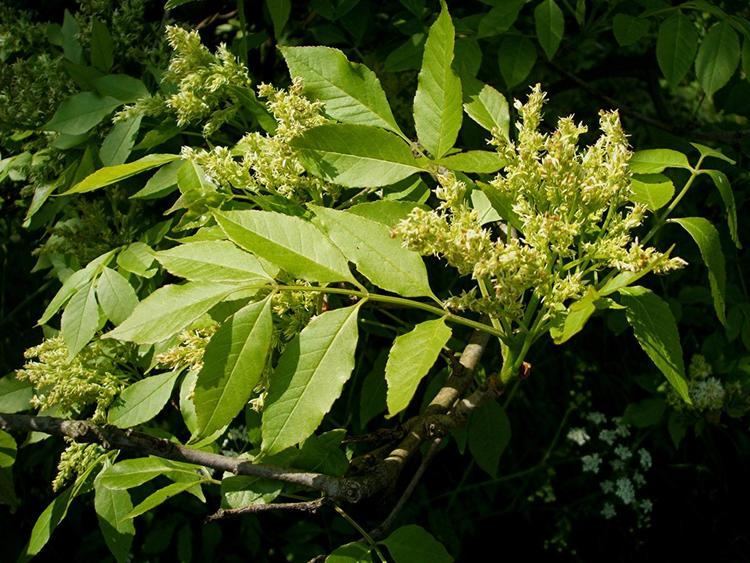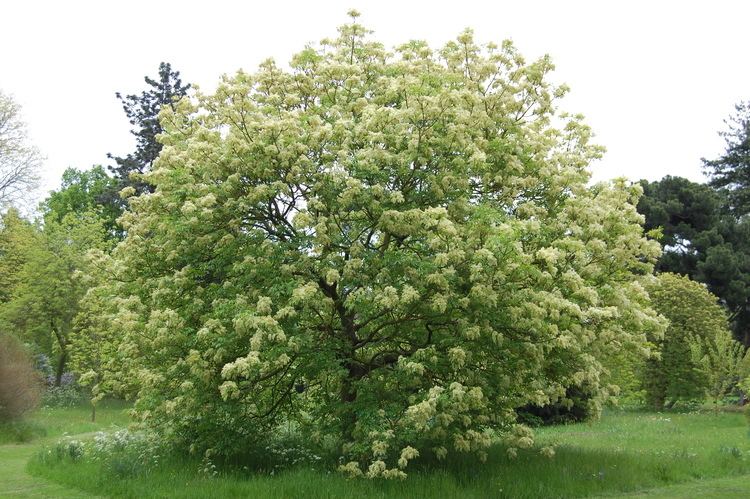Rank Species | Higher classification Ash | |
 | ||
Similar Ash, Quercus pubescens, Fraxinus angustifolia, Ostrya carpinifolia, Fraxinus excelsior | ||
Fraxinus ornus
Fraxinus ornus (manna ash or South European flowering ash) is a species of Fraxinus native to southern Europe and southwestern Asia, from Spain and Italy north to Austria, Poland and the Czech Republic, and east through the Balkans, Turkey, and western Syria to Lebanon and Armenia.
Contents
- Fraxinus ornus
- Octonary ingredients of fraxinus ornus formulations pankaj oudhia s medicinal plant database
- Description
- Cultivation and uses
- References

Octonary ingredients of fraxinus ornus formulations pankaj oudhia s medicinal plant database
Description

Fraxinus ornus is a medium-sized deciduous tree growing to 15–25 m (49–82 ft) tall with a trunk up to 1 m diameter. The bark is dark grey, remaining smooth even on old trees.
The buds are pale pinkish-brown to grey-brown, with a dense covering of short grey hairs.

The leaves are in opposite pairs, pinnate, 20–30 cm (7.9–12 in) long, with 5 to 9 leaflets; the leaflets are broad ovoid, 5–10 mm (0.2–0.4 in) long and 2–4 cm (0.8–2 in) broad, with a finely serrated and wavy margin, and short but distinct petiolules 5–15 mm (0.20–0.59 in) long; the autumn colour is variable, yellow to purplish.
The flowers are produced in dense panicles 10–20 cm (3.9–7.9 in) long after the new leaves appear in late spring, each flower with four slender creamy white petals 5–6 mm (0.20–0.24 in) long; they are pollinated by insects.
The fruit is a slender samara 1.5–2.5 cm (0.59–0.98 in) long, the seed 2 mm (0.08 in) broad and the wing 4–5 mm (0.2–0.2 in) broad, green ripening brown.
Cultivation and uses
Fraxinus ornus is frequently grown as an ornamental tree in Europe north of its native range, grown for its decorative flowers (the species is also sometimes called "flowering ash"). Some cultivated specimens are grafted on rootstocks of Fraxinus excelsior, with an often very conspicuous change in the bark at the graft line to the fissured bark of the rootstock species.
A sugary extract from the sap is extracted by making a cut in the bark; this was compared in late medieval times (attested by c.1400) with the biblical manna, giving rise to the English name of the tree, and some of the vernacular names from its native area ("fresno del Maná" in Spanish, "frassino da manna" in Italian). In fact, the sugar mannose and the sugar alcohol mannitol both derive their name from the extract.
